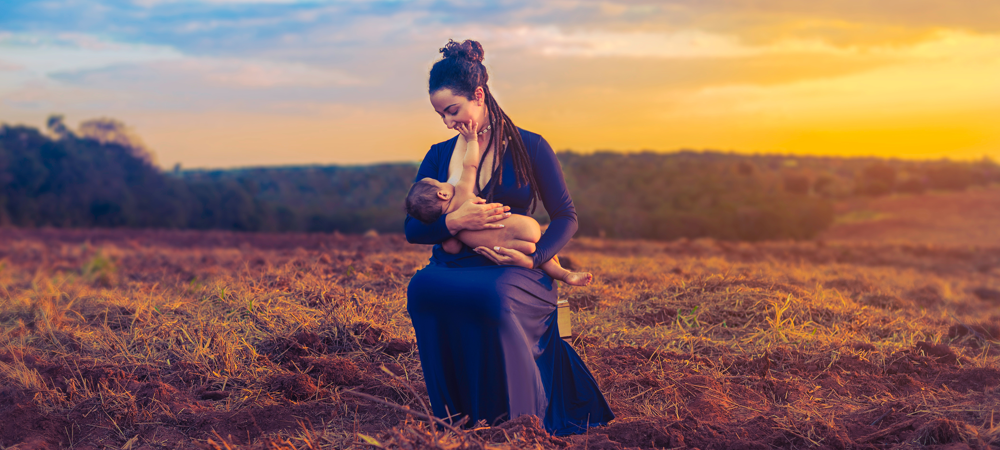We mothers are all too familiar with the struggle of producing enough breast milk for our babies. Each mother throughout time is linked by our biological drive to nourish our offspring; yet, many of us continue to feel alone and isolated. My hope is for us to feel connected through hearing stories about one another on a global and timeless scale.
Before my daughter was born I knew very little about breastfeeding. Suddenly one day in 2010, the day she was born, my whole world began to revolve around it. My story is a common one; plans to breastfeed are derailed by pain, latching challenges, and low milk supply. I spent months pumping, crying, talking to everyone for advice, learning, and always practicing. After finally achieving my version of success, I vowed never to forget the emotional and physical struggle. My appetite for information about breastfeeding became as insatiable as my appetite for good food!
As time passes and my kids grow, I am still constantly drawn toward stories about early motherhood everywhere in the world. Here is an exciting story about a female scientist - UC Berkeley professor Leslea Hlusko - whose genetic and archaeological research led to a new understanding of motherhood and breastfeeding in the ancient past. She and her team discovered genetic evidence from the last ice age that suggests breastfeeding may have played an important role in human natural selection. Their research project examined how the physical shape of teeth can illuminate phases in human evolution.
The story began around 20,000 years ago as people in Eastern Asia began migrating north to arctic regions (modern Siberia, Russia). Some of these people crossed the Bering Strait and populated the Americas. They faced extremely cold weather, sparse sources of food (especially those with Vitamin D), and the sun did not even shine for many days of the year.
Nursing mothers know that Vitamin D is critical for babies and mamas to bulk up calcium storage, stay healthy, and make more milk. Without sunshine and reliable sources of nutrition, our ancient ancestor mamas could not be sure their bodies would produce enough of what their babies needed to survive.
Hlusko and other anthropologists have long wondered about a unique characteristic of tooth shape in East Asian and Native American populations. When the front incisor teeth have a scooped or curved surface on the side facing the tongue, the teeth are described as ‘shoveled.’ Many anthropologists have hypothesized that shoveled teeth adapted in humans as tools for survival, but this explanation was not satisfactory for Dr. Hlusko.
She decided to search for answers from a genetic perspective. They discovered the EDAR gene that codes for tooth shoveling is also responsible for increased breast tissue branching. Hlusko explains, “When you have shared genetic effects across the body, selection for one trait will result in everything else going along for the ride.” In other words, when the EDAR gene is selected for better survival, both tooth shoveling and dense breast tissue are present in people with the modified gene.
Hlusko and her colleagues suggested that mothers with this gene would produce more milk and deliver more nutrients to their babies, thus their babies would also be more likely to survive the harsh conditions of life in the arctic. If these babies were more likely to survive, they would also be more likely to spread their EDAR gene to the next generation.
The researchers examined data on teeth from over 5,000 people in archaeological sites all over the world. Tooth shoveling presented in approximately 40% of the individuals in Asia and in 100% of Native Americans present in North and South America dated before European colonization. This pattern may mean that all humans who crossed the Bering Strait and first populated the Americas carried the gene for tooth shoveling. Over thousands of years, people with this genetic mutation were selected to survive and thus the gene became ubiquitous. Because teeth and bones are the only body parts to survive thousands of years in the archaeological record, scientists could not solve the mystery of tooth shoveling until the recent invention of genetic research showed the connection between tooth shape and breast tissue.
Thanks to this random genetic mutation that increased mammary duct growth and branching, some individuals gained the advantage of making milk with the extra special potency needed to feed their infants. Dr. Hlusko said in a press release in 2018, “This highlights the importance of the mother-infant relationship and how essential it has been for human survival.”
The infant-mother bond is a unique and incredible relationship that promotes health, growth, and love. Sometimes it is wise to have an expansive perspective on our own struggles. Maybe through this discovery, we can appreciate that our bodies are responsive to our needs and aspirations.
The families of the last ice age needed a better way to nourish their infants through cold, dark, unchartered territory. By genetic chance and circumstances, the human body found a way to help them on their way. Through this discovery, I found myself linked to women of the ancient past who endeavored to care for their babies while also forging a path through an undiscovered place in the world.
As a mother, student, PTO board member, and community organizer, Talya K. Brass endlessly seeks balance between adventure, creativity, peace, and sanity. Talya is a Bay Area native valuing quality time with family and friends and learning from the diversity of this magical location. Talya is currently a graduate student studying Anthropology and Bioarchaeology at San Francisco State University. She is a trained volunteer with the Nursing Mothers Counsel.





Share:
Tips to Eat Healthy After Baby Arrives
Breast Milk Storage Guidelines
2 comments
Thank you. It definitely is reassuring to hear stories from other women.
That’s incredible! Our bodies are amazing. Breastfeeding has often reminded me of my connectedness to a long history of mothers caring for their babies.